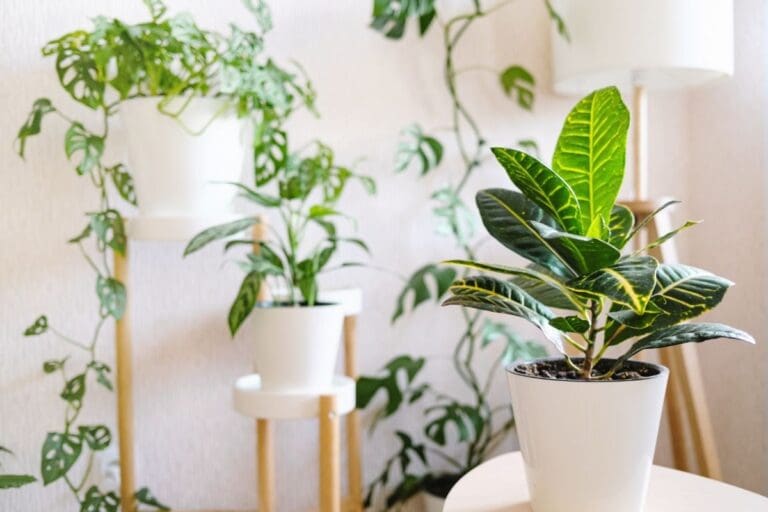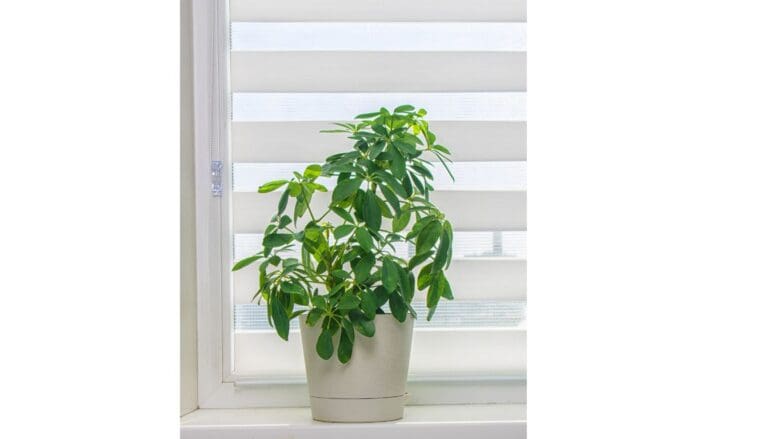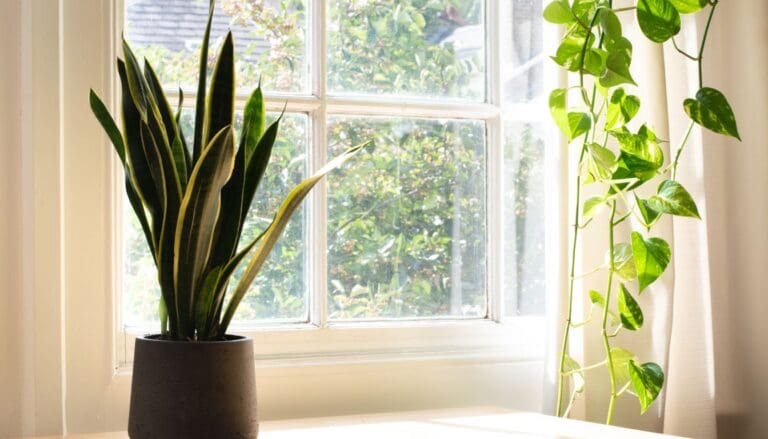How To Save Dying String Of Pearls? (Signs, Possible Problems & Fix)
The string of pearls suffers due to unfavorable conditions, and if you cannot find out what is wrong with it, it might even wilt before you know.
Therefore, it is crucial that you keep an eye on your plant and not avoid any sign that might show that something is wrong with your plant. If you take action on time, you can revive your dying string of pearls. So, in this article, we will learn everything you need to know to save a dying string of pearls.
To save a dying string of pearls, you need to take the following steps:
- Remove the damaged pearls.
- Check the soil moisture and water it thoroughly if the soil is dry.
- Check for root rot and repot in a fresh cactus mix if necessary.
- Move the plant to a bright spot where it gets filtered sunlight.
- Spray some diluted neem oil solution to keep pests at bay
- Maintain a stable temperature and average humidity around the plant.
If you care for your string of pearls, it will go a long way. If you put the plant under unfavorable conditions and don’t care for it, the plant will suffer and might not survive.
We will discuss some problems resulting in a dying string of pearls, fixing the issues, and bringing the plant back to health.

Please note: Simplify Plants is reader-supported. Some links in the post are affiliate links and I get a commission from purchases made through links in the post.
Signs of a dying string of pearls
Plants don’t die all of a sudden. They show signs of problems to let you know that something is wrong. If you can get the hints and take steps to cure the plant, it will revive.
In the case of a string of pearls, the signs can be:
- Yellow leaves
- Brown leaves
- Stunted growth
- Droopy leaves
- Soil smelling foul
- Leaves falling off
How do you revive a dying string of pearls?
If you can identify the problem on time, it will be easier to treat the plant. We have already read what the signs are. Now let’s find out the possible issues with the string of pearls.
Overwatered string of pearls

The string of pearls doesn’t like sitting on the water for a prolonged period. The wet soil makes the roots mushy, and they are unable to function correctly.
Possible problems:
- Brown leaves
- Brown edges on leaves
- Leaves falling off the plant
- Shriveled pearls
- Pest infestation
- Root rot
Solutions:
- Stop watering the plant so the plant can recover.
- Give the plant sufficient light.
- Place the plant in an area where it gets enough air circulation.
- Check the soil before you water your string of pearls the next time.
- Repot the plant in case of root rot.
Prevention:
- Always check the soil before you water the string of pearls plant.
- You can dip your finger a few inches inside the soil to see if it is dry or wet.
- You can use a moisture meter if you are a beginner, and that will tell you the moisture level.
- Use well-draining soil that allows proper airflow between the roots.
- Check the drainage holes to ensure that they are not blocked, and excess water is getting drained from the system.
- Keep in mind that the water requirements of the plant will change in winter.
Also read: How Often Should You Water String Of Pearls?
Underwatered string of pearls

Though the string of pearls can do with less water for some period, underwatering over a prolonged period is bad for your plant’s health and can cause severe damages.
Possible problems:
- Brown leaves
- Discoloration
- Droopy leaves
- Stress
- Slow growth
- Shriveled pearls
Solutions:
- Prune the damaged leaves that have turned yellow or brown.
- Water the plant thoroughly till the excess water starts coming out of the drainage holes.
- Consider using a pebble tray or a humidifier to add some moisture to your underwatered plant.
Prevention:
- Keeping the soil dry for too long will make the plant dehydrated, so you should water the plant if you notice that the soil has gone dry.
- You can use your finger or a moisture meter to check the moisture.
- You can consider lifting the pot to check the moisture. If the pot feels light, you can consider watering the plant.
- Make sure that you are using the correct soil that doesn’t let the water drain out excessively.
Also read: Overwatering Vs Underwatering Plants: Signs, Fix & More
Lighting issues

The string of pearls thrives in six to eight hours of indirect light every day. Keeping it under direct sunlight for too long or keeping it in a low-light area can cause problems for the plant.
Possible problems:
- Sunburn
- Brown leaves
- Droopy leaves
- Slow growth
Solutions:
- If you have placed your plant near a window that gets direct sunlight, move the plant a few inches away from the window.
- Make sure that the string of pearls gets six to eight hours of indirect light.
- You can use blinds or curtains to protect the plant from the harsh sunlight.
- If you have placed your string of pearls outdoors, move it under a shade.
- If the plant is not getting enough light, move it to a bright area of your house with sufficient sunlight.
- If you don’t have a bright spot in your house, use artificial lights such as LED or grow lights.
Prevention:
- You can place the string of pearls near an east-facing window in the morning as they enjoy the direct morning sunlight.
- A south-facing window will be ideal as the plant will get enough light throughout the day.
- If your string of pearls is not getting six hours of light, you can use artificial lights to fill the gap.
- Avoid exposing the plant to too much direct sunlight.
Also read: How Much Light Does String Of Pearls Need?
Pest infestation

Pests are deadly as they suck the nutrition out of the plant and make it weak. The plant can eventually die if you don’t get rid of the pests.
Possible problems:
- Slow growth
- White spots
- Leaves falling off
- Brown leaves
- Speckled leaves
Solutions:
- Isolate the plant so that the pests don’t spread to other plants.
- Keep the plant under running water and wash it to get rid of the pests.
- Use an organic way to get rid of the pests, such as soapy water or neem oil.
- Add five tablespoons of dish soap to four cups of water and mix it. Spray it on the plant. Or, spray diluted neem oil on the plant.
- Keep doing it for 14 days to get rid of the pests.
Prevention:
- Keep a check on your plant to identify the pest infestation at the initial stages.
- You can spray neem oil on your plant every month to keep the pests away.
- Ensure proper air circulation around the plant. Don’t keep the plant in a high humidity area.
Also read: Do String Of Pearls Attract Bugs? (Common bugs+How To Get Rid Of Them)
Low humidity

The string of pearls thrives in average room humidity levels(40-50%) but low humidity during the winter can lead to loss of moisture.
Possible problems:
- Brown tips
- Brown spots on leaves
- Dried leaves
Solutions:
- Increase the humidity levels around your plant with the help of a humidifier.
- If you don’t have a humidifier, you can use a pebble tray or group your string of pearls with other plants to increase the humidity.
- Shift the plant to the basement, kitchen, or bathroom that has more humidity than the other rooms of your house.
Prevention:
- The average humidity level that works well for the string of pearls is 40-50%.
- Don’t keep the plant in high humidity environment for too long.
- Avoid overwatering the plant.
- Use a humidifier or dehumidifier to regulate the humidity.
Also read: Should you mist string of pearls? (+Humidity Guide)
Inappropriate temperature

The string of pearls can suffer due to sudden rise or fall of temperatures. The temperatures become low during the winter months and the plant can’t tolerate the cold.
Possible problems:
- Brown blotches on leaves
- Stress
- Wrinkled leaves
- Discoloration
Solutions:
- The string of pearls thrives in temperatures that go above 70°F. But an average temperature of 50-60°F is best for these succulents.
- Don’t expose the plant to cold drafts during the winter. Bring it inside the house if you keep it outdoors or move it away from the window if the window gets cold drafts.
- Consider placing the plant a few feet away from the fireplace or furnace to increase the temperature.
Prevention:
- Don’t expose your string of pearls to cold temperatures that go below 50°F.
- Keep the plant away from cold drafts.
- Don’t place the string of pearls near the radiators, fireplace, or any other heating system, as that can burn the leaves and dehydrate the plant.
Also read: Where Should I Keep My String Of Pearls Plant?
Root rot

Overwatering, using the wrong soil, and lack of a proper drainage system can cause root rot in your string of pearls. Root rot can be dangerous, and there are many signs that the plant gives out if it is suffering root rot.
Possible problems:
- Dull leaves
- Yellow leaves
- Stunted growth
- Wilting of leaves
- Brown or black spots on leaves
- Brown, mushy roots
- Severe root rot can cause death
Solutions:
- Prune the damaged leaves of the string of pearls.
- Gently take the plant out of the pot and wash the roots to remove the soil.
- Use a sterilized pair of scissors to remove the damaged roots.
- Repot the plant in a new pot with fresh soil mix.
- Water the plant thoroughly and let the excess water drain out.
Prevention:
- It will help if you water the string of pearls only after checking the soil and making sure that it is not moist.
- If you notice any sign of root rot, check the roots and start the treatment as soon as possible.
- Give the plant enough light so that the soil doesn’t remain wet for too long.
- Use a pot that has drainage holes and ensure that the drainage holes don’t get blocked.
Also read: How To Save String Of Pearls From Root Rot? (+Signs & Causes)
Final Words
The string of pearls can have various problems, but that doesn’t always mean that the plant is dying.
If you can identify the issue, start the treatment on time, and not let it happen again, you can save your string of pearls and help it thrive.
Water the plant properly, give it enough light, maintain the correct temperature and humidity levels, and give it adequate fertilizer during the growing season.
Keep an eye on the plant from time to time so that you can identify any problem during the initial stages and start the treatment accordingly.
Ref: Wikipedia, Missouri Botanical Garden, University of Wisconsin.
Recommended Garden Supplies
| Product Image | Our Recommended Gardening Supplies | Check Offers! |
|---|---|---|
Top Top
Top
Top
Top
Top
Top
Top
Top | rePotme Houseplant and Tropical Classic Potting Soil Mix | Check Offer On Amazon |
 Top
Top
Top
Top
Top
Top
Top
Top | Espoma Organic Indoor Plant Food | Check Offer On Amazon |
 Top
Top
Top
Top
Top
Top
Top
Top | GooingTop LED Grow Light 6000K Full Spectrum Clip Plant Growing Lamp | Check Offer On Amazon |
 Top
Top
Top
Top
Top
Top
Top
Top | Soil Moisture Meter | Check Offer On Amazon |
 Top
Top
Top
Top
Top
Top
Top
Top | Govee Hygrometer Thermometer, Bluetooth Enabled! | Check Offer On Amazon |
 Top
Top | LEVOIT Humidifiers for Large Room(Best For Plants) | Check Offer On Amazon |
 Top
Top
Top
Top
Top
Top
Top
Top | Upgraded DIY Automatic Drip Irrigation Kit, 15 Potted Houseplants Support | Check Offer On Amazon |
 Top
Top
Top
Top
Top
Top
Top
Top | Stainless Steel Heavy Duty Gardening Tool Set | Check Offer On Amazon |
 Top
Top
Top
Top
Top
Top
Top
Top | Bonide Insecticidal Soap | Check Offer On Amazon |
 Top
Top
Top
Top
Top
Top
Top
Top | Bonide 32 oz Spray Neem Oil for Organic Gardening | Check Offer On Amazon |
 Top
Top
Top
Top
Top
Top
Top
Top | Garden Safe Fungicide | Check Offer On Amazon |






